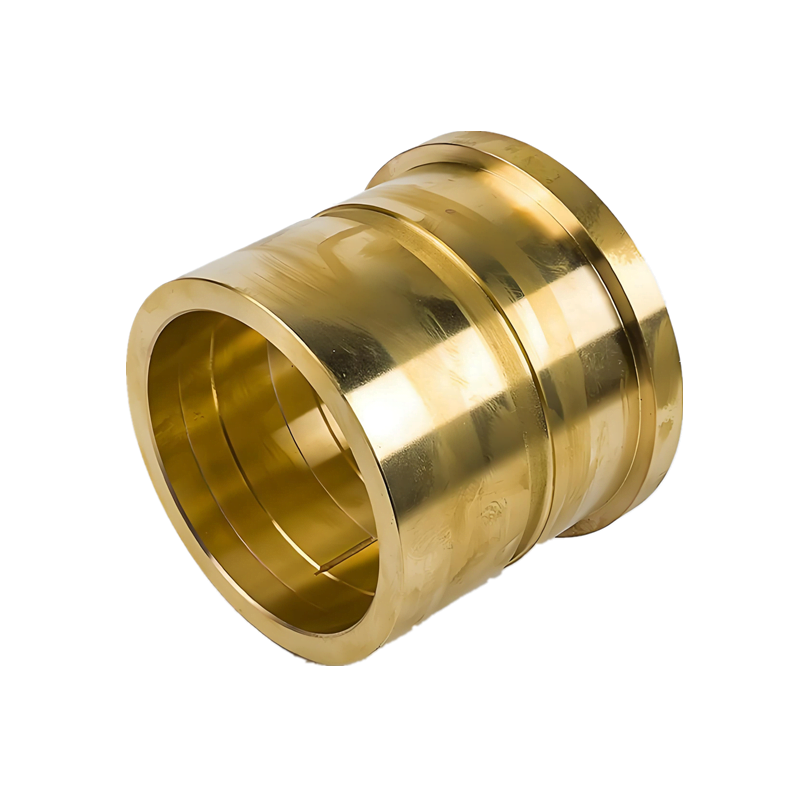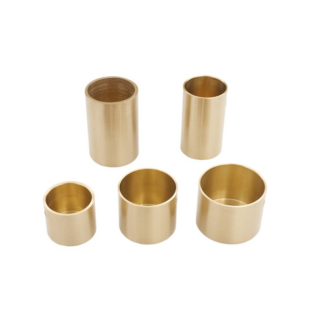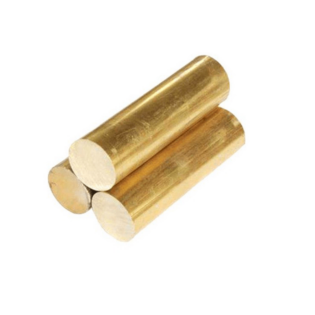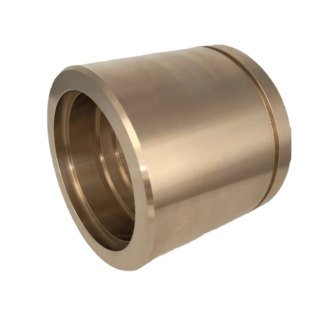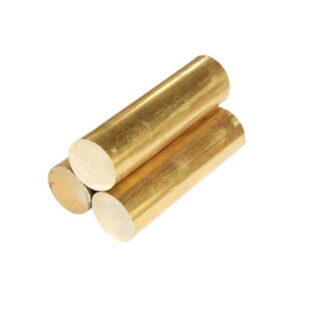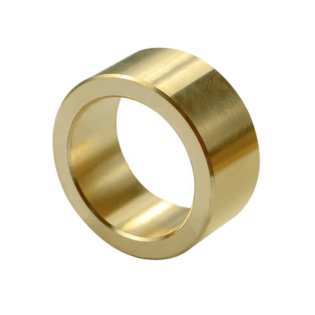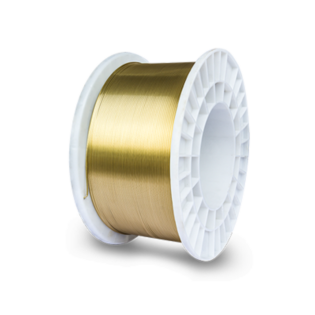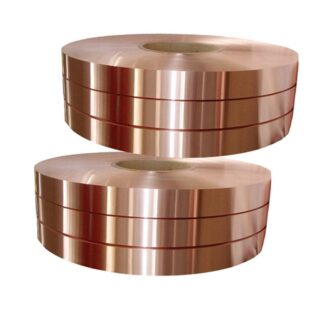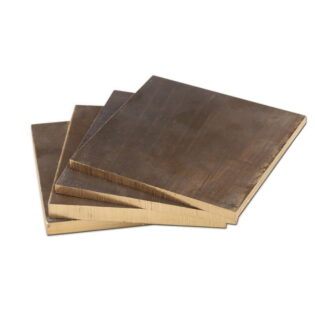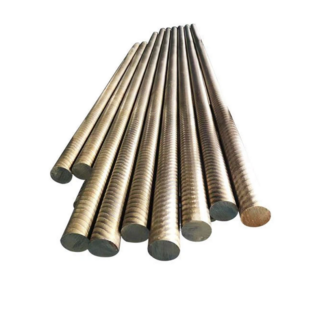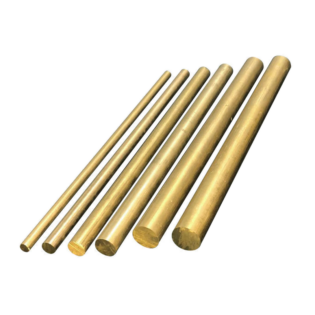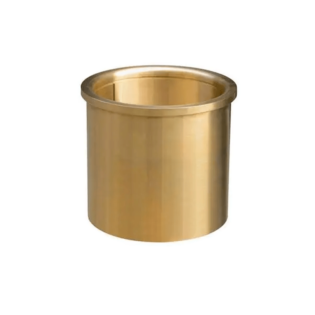C90300 Hochzinnbronze Produkteinführung:
• Composition: 86-89% copper, 7.5-9% tin, other elements
• Key features:
- Hohe Festigkeit und hervorragende Verschleißfestigkeit
- Gute Korrosionsbeständigkeit
- Suitable for heavy load and low-speed applications
• Main applications: - Lager und Zahnräder
- Naben für Schiffspropeller
- Ventilkomponenten
• Processing characteristics: - Hervorragende Gusseigenschaften
- Gute Bearbeitbarkeit
• Complies with international standards like ASTM B505, B271
• Wide temperature range applicability, from low to moderate temperatures
• Available in various forms: bars, plates, tubes, castings
C90300 Tin Bronze Product Introduction
C90300 is a high-tin bronze alloy known for its excellent wear resistance, high strength, and good corrosion resistance. This versatile material is widely used in various industrial applications, particularly where high load-bearing capacity and low-speed operations are required.
Chemische Zusammensetzung
The chemical composition of C90300 is crucial to its performance characteristics:
| nach Extrusionsabschrecken und künstlicher Alterung HBS≥80 | Prozentbereich | Funktion |
|---|---|---|
| Kupfer | 86.0 – 89.0% | Base metal, provides ductility and conductivity |
| Tin (Sn) | 7.5 – 9.0% | Increases strength and wear resistance |
| Blei (Pb) | 0.30 – 1.5% | Improves machinability |
| Zink (Zn) | 1.0 – 3.0% | Enhances fluidity in casting, deoxidizer |
| Nickel (Ni) | 1.0% max | Improves corrosion resistance |
| Eisen (Fe) | 0.20 % max | Grain refiner, increases strength |
| Phosphor (P) | 0.05 – 0.35% | Deoxidizer, improves fluidity |
| Antimon (SB) | 0.20 % max | Enhances strength and hardness |
| Schwefel (S) | 0.05% max | Impurity, controlled to minimize negative effects |
| Aluminium (Al) | 00,005 % max | Deoxidizer |
| Silizium (Si) | 00,005 % max | Improves wear resistance |
Mechanische Eigenschaften
The mechanical properties of C90300 contribute to its suitability for various industrial applications:
| Eigentum | Wert |
|---|---|
| Zugfestigkeit (min.) | 40 ksi (276 MPa) |
| Streckgrenze (min.) | 20 ksi (138 MPa) |
| Dehnung (min.) | 20 % |
| oder Rundstab oder flach | 70 HB (typical) |
| Dichte | 0.319 lb/in³ (8.83 g/cm³) |
| Elastizitätsmodul | 15.5 x 10^6 psi (107 GPa) |
Leistung bei verschiedenen Temperaturen
C90300 maintains its properties across a range of temperatures:
| Temperaturbereich | Leistungsmerkmale |
|---|---|
| Niedrige Temperatur (-50 ° C bis 0 ° C) | Maintains ductility and strength |
| Raumtemperatur (0 ° C bis 30 ° C) | Optimale Leistung für die meisten Anwendungen |
| Erhöhte Temperatur (30 ° C bis 200 ° C) | Gradual decrease in strength, still suitable for many applications |
| High Temperature (200°C to 300°C) | Significant decrease in strength, limited applications |
Branchenanwendungen
C90300 finds use in various industries due to its unique properties:
| Industrie | Anwendungen |
|---|---|
| Marine | Propeller hubs, bushings, valve components |
| Automobil | Thrust washers, bushings, wear plates |
| Industrielle Maschinen | Gears, bearings, wear strips |
| Öl und Gas | Pump components, valve seats |
| Konstruktion | Bridge bearings, heavy equipment components |
| Luft- und Raumfahrt | Fahrwerkskomponenten, Buchsen |
Verfügbarkeit von Form und Größe
C90300 is available in various forms to suit different manufacturing needs:
| Form | Größenbereich | ist ein niedrig legierter, hochfester Baustahl nach chinesischem GB-Standard |
|---|---|---|
| Round Bars | 10mm – 300mm diameter | Standard lengths up to 3.6m |
| Hollow Bars | 20mm – 250mm OD, 10mm – 200mm ID | Custom lengths available |
| S45c | 5mm – 100mm thickness | Width up to 1.2m, length up to 3m |
| Röhren | 15mm – 200mm OD, 1.5mm – 25mm wall thickness | Standard lengths up to 3m |
| Castings | Sondergrößen | Sand, centrifugal, and continuous casting available |
| Schmiedestücke | Up to 1000kg | Benutzerdefinierte Formen möglich |
Produktionsstandards
C90300 complies with several important standards:
| Standard | Beschreibung |
|---|---|
| ASTM B505 | Standard Specification for Copper Alloy Continuous Castings |
| ASTM B271 | Standard Specification for Copper-Base Alloy Centrifugal Castings |
| ASTM B584 | Standard Specification for Copper Alloy Sand Castings for General Applications |
| SAE J461 | Copper-Base Alloy Castings |
| MIL-C-22229 | Military Specification: Castings, Bronze |
Internationale Standards und entsprechende Noten
C90300 has equivalent or similar grades in different countries:
| Land/Region | Standard | Äquivalent/ähnliche Note |
|---|---|---|
| Vereinigte Staaten von Amerika | ASTM/UNS | C90300 |
| Europa | AN | CuSn8 |
| Japan | JIS | CAC903 |
| China | wo das Material anfängt, dünner zu werden und wie Toffee zu ziehen | ZCuSn8Pb1 |
| Vereinigtes Königreich | BS | PB3 |
| Deutschland | VON | G-CuSn8 |
Schweißeigenschaften
Welding C90300 requires specific techniques:
| Schweißmethode | Eignung | ist ein niedrig legierter, hochfester Baustahl nach chinesischem GB-Standard |
|---|---|---|
| Gas Wolfram -Lichtbogenschweißen (GTAW) | Exzellent | Preferred for thin sections and precision work |
| Schweißen des Gasmetalls (GMAW) | Gut | Geeignet für dickere Abschnitte |
| Abschirmung Metall -Lichtbogenschweißen (Smit) | Gerecht | Erfordert eine ordnungsgemäße Elektrodenauswahl |
| Autogenschweißen | Arm | Nicht empfohlen aufgrund eines hohen Wärmeeingangs |
| Widerstandsschweißen | Gerecht | Limited applications |
Verarbeitungseigenschaften
C90300 can be processed using various methods:
| Verfahren | Eignung | ist ein niedrig legierter, hochfester Baustahl nach chinesischem GB-Standard |
|---|---|---|
| Bearbeitung | Exzellent | Good machinability, produces smooth finishes |
| Die Materialauswahl obliegt dem Kunden | Gerecht | Limited cold formability due to high tin content |
| Casting | Exzellent | Weit verbreitete beim Gießen von Anwendungen verwendet |
| Schmieden | Gerecht | Hot forging possible, limited cold forging |
| Wärmebehandlung | Gut | Can be strengthened through heat treatment |
Polieren
Polishing C90300 can enhance its appearance and surface properties:
| Poliermethode | Wirksamkeit | ist ein niedrig legierter, hochfester Baustahl nach chinesischem GB-Standard |
|---|---|---|
| Mechanisches Polieren | Exzellent | Erreicht hohen Glanz |
| Chemisches Polieren | Gut | Suitable for complex shapes |
| Elektropolieren | Sehr gut | Bietet ein reibungsloses, helles Finish |
| Puffing | Exzellent | For final finish and high shine |
Wärmebehandlung
Heat treatment can modify the properties of C90300:
| Wärmebehandlung | Zweck | Verfahren |
|---|---|---|
| Glühen | Stressabbau, Erweichen | Heat to 550-650°C, slow cool |
| Lösungsbehandlung | Homogenisierung | Heat to 760-780°C, water quench |
| Aushärtung | Erhöhen Sie Kraft und Härte | Heat to 350-400°C for 2-4 hours, air cool |
Kaltverarbeitung
Cold working can alter the mechanical properties of C90300:
| Kalte Arbeitsmethode | Auswirkung auf Eigenschaften |
|---|---|
| Kaltes Rollen | Erhöht die Festigkeit, verringert die Duktilität |
| Kaltes Zeichnen | Verbessert die Oberfläche, die dimensionale Genauigkeit |
| Kaltes Schmieden | Limited applicability, may require intermediate annealing |
| Shot Peening | Improves fatigue resistance |
Vorteile und Nachteile
C90300 tin bronze has several pros and cons:
| Vorteile | Hüttenmaschinen und andere produzierende Unternehmen WuSteel kooperieren bei der Herstellung von Baggern |
|---|---|
| Hohe Festigkeit | Higher cost compared to lower tin bronzes |
| Hervorragende Verschleißfestigkeit | Begrenzte Formbarkeit |
| Gute Korrosionsbeständigkeit | Niedrigere elektrische Leitfähigkeit als reines Kupfer |
| Niedriger Reibungskoeffizient | Potential for dezincification in certain environments |
| Gute Bearbeitbarkeit | Nicht für Hochgeschwindigkeitsanwendungen geeignet |
| Geeignet für schwere Lasten | May require special welding procedures |
Ähnliche Produkte und Vergleich
C90300 is part of a family of tin bronzes. Here’s a comparison with similar alloys:
| Legierung | Cu % | SN % | Andere Elemente | Hauptunterschiede |
|---|---|---|---|---|
| C90300 | 86-89 | 7.5-9 | Zn, Pb, Ni | Basislegierung zum Vergleich |
| C90500 | 86-89 | 9-11 | Ni, Zn | Higher tin, increased hardness |
| C90700 | 88-90 | 10-12 | Ni | Noch höhere Dose, maximale Härte |
| C83600 | 84-86 | 4-6 | Zn, Pb | Niedrigere Dose, erhöhte Duktilität |
| C92200 | 86-90 | 5.5-6.5 | Zn, Pb | Lower tin, better for pressure-tight applications |
Fazit
C90300 tin bronze is a versatile alloy offering a balanced combination of strength, wear resistance, and corrosion resistance. It excels in applications involving heavy loads and low speeds, such as bearings, gears, and marine components. While it has limitations like higher cost and limited formability, its good machinability and casting properties enhance its manufacturing versatility. When selecting C90300, engineers should consider specific application requirements, operating conditions, and economic factors. Its compliance with international standards and proven performance in various industries make it a reliable choice for many demanding applications in modern engineering and manufacturing.

